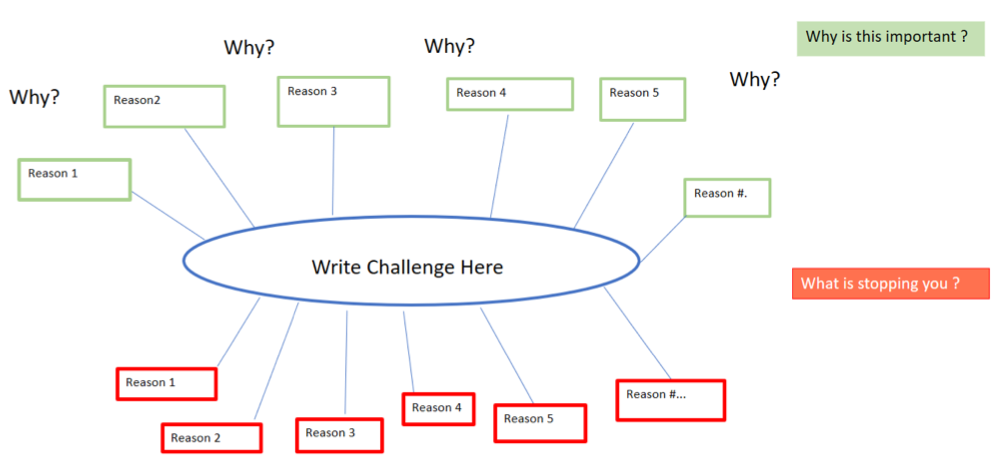Unsure where to focus? How to generate ideas? Pick the right solutions?
In this three-part series of posts, we will be looking at three different tools that can help you answer these questions.
As companies start to transition into the digital era, many diverse challenges start to emerge. These can range from having to introduce a new company culture or new ways to work to responding rapidly to a constantly changing environment.
How then can we evaluate which challenges are the most relevant? Here at the LOIC, Joanne Marchand introduced to us a first technique that will help you gain clarity about a challenge and its relevance to your particular situation.
Webbing Technique
Sometimes we waste a lot of energy in solving challenges that were not so important in the first place. Therefore, having clarity of the relevance of the problem is key before moving on to finding and implementing solutions. The Webbing technique can help achieve exactly that.
Take a sheet of paper, and begin by writing the challenge in the centre. Then map out the answers to the question “why is this important?”. Each time you have an answer, ask the same question again: why, why, why? Just as a child would.

If you keep going long enough (15 minutes is good for starters), you should manage to fill out the whole top half of the map. If you haven’t, maybe you’ll come to the conclusion that it isn’t that important to solve that particular problem after all. If this is the case, you might want to move on to something else. But if you all agree that the challenge is in fact important, it’s time to move to the second phase of the exercise.
The next stage is to fill out the lower half of the page with the answers to the question “What’s stopping us?”. This part is actually much easier as we’re naturally good at externalising the negative sides of a given situation. In any case, you will most likely identify a few obstacles that won’t take much effort to resolve, and others that will need a little more imagination.

This exercise is very helpful because it allows you not only to externalize all the obstacles that might be preventing you from acting, but also to weigh the benefits against the difficulties.
At the LOIC, we did this exercise for the challenge “How can we create a culture of innovation inside the organization”. Here are the results:

Let’s focus on the reasons stopping us from making it happen. We found that convenience, inertia, lack of appetite, and attitude towards change are obstacles that are related to the current culture; thus, we have identified the need to change the current culture!
Solving the additional problem with regulations could be a bigger obstacle, but when we realize that the survival of the company is at stake, we know it’s worth all our efforts.
Now that we have a better understanding of the challenge, it’s time to come up with solutions! The next post will elaborate on the tools that we use to generate ideas, and how to pick those with the most potential.
Stay tuned!
This article has been written in collaboration with Joanne Marchand.

Who is Joanne Marchand?
- Innovation & Corporate Social Responsibility lead at BNP Paribas Securities Services.
- A 2-hatted role combining innovation leadership, acceleration, and creative facilitation at the service of the business strategy & the roll-out at a local level of the BNP Paribas group Corporate Social Responsibility.
- Trained in the methods of creative leadership within the workplace in Italy, Paris and at the BBC Academy, London.


[…] on the LOIC blog, Joanne Marchand taught us the Webbing technique, which can be used to approach and clarify the challenges that we are looking to solve in our […]
[…] on the LOIC blog, Joanne Marchand taught us the Webbing technique and the Brainwriting […]